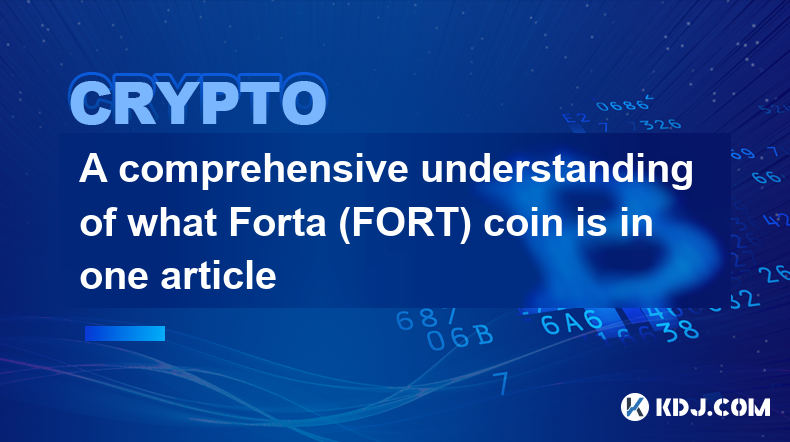-
 Bitcoin
Bitcoin $96,928.4510
-0.22% -
 Ethereum
Ethereum $1,811.5848
-1.37% -
 Tether USDt
Tether USDt $1.0002
0.02% -
 XRP
XRP $2.1226
-1.92% -
 BNB
BNB $601.8969
-0.46% -
 Solana
Solana $147.4113
-0.65% -
 USDC
USDC $0.9999
0.00% -
 Dogecoin
Dogecoin $0.1722
-0.84% -
 Cardano
Cardano $0.6715
-1.81% -
 TRON
TRON $0.2492
1.72% -
 Sui
Sui $3.3320
-1.61% -
 Chainlink
Chainlink $13.8556
-0.42% -
 Avalanche
Avalanche $19.5435
-3.02% -
 UNUS SED LEO
UNUS SED LEO $8.8164
1.03% -
 Stellar
Stellar $0.2599
-1.05% -
 Bitcoin Cash
Bitcoin Cash $384.1968
1.59% -
 Shiba Inu
Shiba Inu $0.0...01276
-0.79% -
 Toncoin
Toncoin $3.0066
-0.77% -
 Hedera
Hedera $0.1753
-1.07% -
 Hyperliquid
Hyperliquid $20.9956
-0.32% -
 Litecoin
Litecoin $90.3406
-2.85% -
 Polkadot
Polkadot $3.9781
-0.24% -
 Dai
Dai $1.0001
0.00% -
 Monero
Monero $281.6167
-1.97% -
 Bitget Token
Bitget Token $4.2281
-2.48% -
 Ethena USDe
Ethena USDe $1.0007
0.03% -
 Pi
Pi $0.5885
1.41% -
 Pepe
Pepe $0.0...08242
2.27% -
 Bittensor
Bittensor $365.3967
-3.93% -
 Uniswap
Uniswap $4.8535
-3.19%
A comprehensive understanding of what Forta (FORT) coin is in one article
Forta (FORT) offers real-time cryptocurrency network monitoring and alerts through decentralized nodes, incentivizing users with FORT tokens for creating and maintaining custom detectors tailored to their specific monitoring needs.
Dec 31, 2024 at 01:17 pm

Key Points:
- Definition and Background of Forta (FORT)
- The FORT Token and Its Role in the Forta Ecosystem
- How Forta Works: Monitoring and Alerting System for Cryptocurrency Networks
- Benefits of Using Forta and Potential Risks Involved
- Steps on How to Use Forta
- Factors to Consider Before Using Forta
- Frequently Asked Questions (FAQs) on Forta (FORT)
What is Forta (FORT) Coin?
Forta (FORT) is a decentralized network that provides real-time monitoring and alerting systems for cryptocurrency networks. It allows users to create custom detectors to monitor specific events or patterns on various blockchains, including Ethereum, Polygon, and Arbitrum. By leveraging the FORT token, the platform incentivizes users to contribute to the network's security and efficiency.
The FORT Token and Its Role in the Forta Ecosystem
The FORT token is the native asset of the Forta network. It serves several key functions within the ecosystem, including:
- Governance: FORT token holders participate in the governance of the Forta protocol by voting on protocol upgrades and proposals.
- Incentivization: Users who create and run detectors on the Forta network are rewarded with FORT tokens based on the value and impact of their contributions.
- Community Engagement: FORT holders can engage in discussions, share insights, and participate in various community initiatives related to the development and adoption of the Forta platform.
How Forta Works: Monitoring and Alerting System for Cryptocurrency Networks
Forta operates on a distributed network of nodes that continuously monitor multiple blockchain networks. Users can create custom detectors that specify specific conditions or events they want to monitor. These detectors can range from simple price threshold triggers to complex pattern recognition algorithms.
When a detector is triggered by an event on the target blockchain, it notifies users through email, Telegram, or webhook. This allows users to respond quickly to potential threats, such as security breaches, price fluctuations, or gas spikes.
Benefits of Using Forta and Potential Risks Involved
Using Forta offers several benefits to cryptocurrency users:
- Real-Time Monitoring: Forta's distributed nodes ensure real-time monitoring of blockchain networks, providing immediate alerts for important events.
- Customizable Detectors: Users can create their own detectors tailored to their specific needs and monitor parameters relevant to their investments or operations.
- Improved Security: Forta's monitoring system can help users detect and respond to potential security threats, such as phishing attacks, smart contract vulnerabilities, and market manipulation.
- Risk Management: By identifying potential risks in advance, users can take appropriate actions to mitigate losses or protect their assets.
Steps on How to Use Forta
To use Forta, follow these steps:
- Install the Forta CLI (Command-Line Interface).
- Create a Forta account and connect it to the Forta network.
- Create a new detector using the Forta query language.
- Deploy the detector to the Forta network by submitting a transaction.
- Receive alerts and notifications based on the conditions specified in the detector.
Factors to Consider Before Using Forta
Before using Forta, consider the following factors:
- Technical Proficiency: Using Forta requires some technical knowledge and familiarity with the Forta query language.
- Transaction Costs: Deploying detectors on the Forta network incurs transaction costs.
- Data Availability: Forta's monitoring capabilities depend on the availability of data from the target blockchain networks.
- Reliance on Third Parties: Forta relies on external infrastructure providers for data collection and alert delivery.
FAQs on Forta (FORT)
Q: What is the use case of the FORT token?
A: The FORT token is used for governance, incentivization, and community engagement within the Forta ecosystem.
Q: How does Forta differ from other blockchain security platforms?
A: Forta emphasizes decentralization, allowing users to create and deploy their own detectors, making the platform adaptable to a wide range of monitoring needs.
Q: Is Forta suitable for individual investors?
A: Yes, individual investors can use Forta to monitor their investments and receive alerts on relevant market events or security threats.
Q: How secure is the Forta network?
A: Forta uses a decentralized network architecture and consensus mechanisms to ensure data integrity and prevent malicious attacks.
Q: What are the future plans for Forta?
A: Forta plans to continue expanding its monitoring capabilities, supporting more blockchain networks, and building a comprehensive security ecosystem for the cryptocurrency industry.
Disclaimer:info@kdj.com
The information provided is not trading advice. kdj.com does not assume any responsibility for any investments made based on the information provided in this article. Cryptocurrencies are highly volatile and it is highly recommended that you invest with caution after thorough research!
If you believe that the content used on this website infringes your copyright, please contact us immediately (info@kdj.com) and we will delete it promptly.
- Avalanche (AVAX) continues to impress in the blockchain space, trading at $19.45 with an intriguing lineup of developments.
- 2025-05-08 08:55:13
- Stripe's AI Revolution: A Dual Play in Payments and Cryptocurrency
- 2025-05-08 08:55:13
- Dogecoin (DOGE) Price Prediction: Diamond Bottom Reversal Pattern Hints at a Potential Breakout to $0.35
- 2025-05-08 08:50:13
- Bitcoin (BTC) price soars to US$96,446 on strong institutional buying of spot Bitcoin exchange-traded funds (ETFs).
- 2025-05-08 08:50:13
- Bitcoin (BTC) price prediction: BTC to soar to US$100,000
- 2025-05-08 08:45:12
- Doodles Launches Its $DOOD Token on Solana, Binance Futures Also Lists Perpetual Contracts
- 2025-05-08 08:45:12
Related knowledge

Is Ethereum Layer2 fee low? How to use it cheaper?
May 08,2025 at 03:56am
The question of whether Ethereum Layer 2 solutions offer lower fees and how to use them more economically is a topic of great interest within the cryptocurrency community. Ethereum's Layer 2 solutions have been developed to address the high transaction fees and scalability issues associated with the main Ethereum network. In this article, we will delve ...

How to calculate Ethereum network fee? How to reduce transaction costs?
May 08,2025 at 02:15am
Understanding and managing Ethereum network fees is crucial for anyone involved in transactions on the Ethereum blockchain. The network fee, also known as gas fee, is the amount of Ether (ETH) required to successfully conduct a transaction or execute a smart contract on the Ethereum network. Calculating these fees and finding ways to reduce them can sig...

What is Ethereum Gas Fee? How to optimize Gas Fee to save costs?
May 08,2025 at 03:43am
Ethereum gas fees are a crucial aspect of interacting with the Ethereum blockchain. Understanding and optimizing these fees can significantly impact the cost-effectiveness of transactions and smart contract interactions. In this article, we will delve into what Ethereum gas fees are, how they are calculated, and provide detailed strategies for optimizin...

How to perform MOVE cross-chain transfer? What to do if the gas fee is too high?
May 07,2025 at 08:03pm
Introduction to MOVE Cross-Chain TransferCross-chain transfers have become an essential part of the cryptocurrency ecosystem, allowing users to move assets between different blockchain networks. One of the popular protocols for achieving this is the MOVE cross-chain transfer. This article will guide you through the process of performing a MOVE cross-cha...

How is the DYDX liquidation price calculated? How is the forced liquidation mechanism?
May 08,2025 at 06:49am
The DYDX liquidation price and the forced liquidation mechanism are crucial aspects of trading on the dYdX platform, a decentralized exchange that allows users to trade perpetual contracts. Understanding these concepts is essential for managing risk and maximizing potential returns. In this article, we will delve into the details of how the DYDX liquida...

Does DYDX support cross-chain? Is the transfer speed fast?
May 07,2025 at 05:56pm
Introduction to DYDXDYDX is a leading decentralized exchange (DEX) that primarily operates on the Ethereum blockchain. It is known for its advanced trading features, including perpetual contracts and margin trading. A common question among users is whether DYDX supports cross-chain functionality and how fast the transfer speeds are. In this article, we ...

Is Ethereum Layer2 fee low? How to use it cheaper?
May 08,2025 at 03:56am
The question of whether Ethereum Layer 2 solutions offer lower fees and how to use them more economically is a topic of great interest within the cryptocurrency community. Ethereum's Layer 2 solutions have been developed to address the high transaction fees and scalability issues associated with the main Ethereum network. In this article, we will delve ...

How to calculate Ethereum network fee? How to reduce transaction costs?
May 08,2025 at 02:15am
Understanding and managing Ethereum network fees is crucial for anyone involved in transactions on the Ethereum blockchain. The network fee, also known as gas fee, is the amount of Ether (ETH) required to successfully conduct a transaction or execute a smart contract on the Ethereum network. Calculating these fees and finding ways to reduce them can sig...

What is Ethereum Gas Fee? How to optimize Gas Fee to save costs?
May 08,2025 at 03:43am
Ethereum gas fees are a crucial aspect of interacting with the Ethereum blockchain. Understanding and optimizing these fees can significantly impact the cost-effectiveness of transactions and smart contract interactions. In this article, we will delve into what Ethereum gas fees are, how they are calculated, and provide detailed strategies for optimizin...

How to perform MOVE cross-chain transfer? What to do if the gas fee is too high?
May 07,2025 at 08:03pm
Introduction to MOVE Cross-Chain TransferCross-chain transfers have become an essential part of the cryptocurrency ecosystem, allowing users to move assets between different blockchain networks. One of the popular protocols for achieving this is the MOVE cross-chain transfer. This article will guide you through the process of performing a MOVE cross-cha...

How is the DYDX liquidation price calculated? How is the forced liquidation mechanism?
May 08,2025 at 06:49am
The DYDX liquidation price and the forced liquidation mechanism are crucial aspects of trading on the dYdX platform, a decentralized exchange that allows users to trade perpetual contracts. Understanding these concepts is essential for managing risk and maximizing potential returns. In this article, we will delve into the details of how the DYDX liquida...

Does DYDX support cross-chain? Is the transfer speed fast?
May 07,2025 at 05:56pm
Introduction to DYDXDYDX is a leading decentralized exchange (DEX) that primarily operates on the Ethereum blockchain. It is known for its advanced trading features, including perpetual contracts and margin trading. A common question among users is whether DYDX supports cross-chain functionality and how fast the transfer speeds are. In this article, we ...
See all articles





















































































